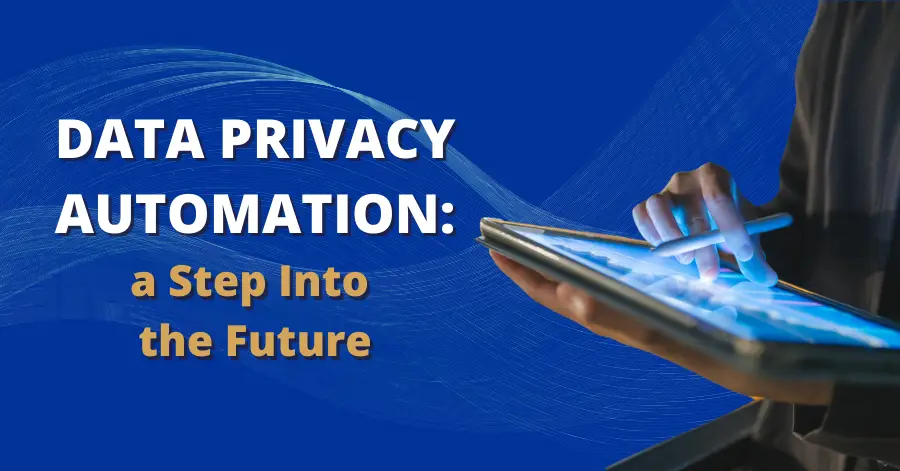6 Common Privacy Mistakes & How to Prevent Them


Everyone makes mistakes. No matter our intentions, we are only human. Unfortunately, when these mistakes occur in the context of data privacy, the consequences can spread further and cause much more trouble than expected.
Luckily, most privacy mistakes are relatively easy to prevent. Let’s look at several common privacy mistakes and the steps your business can take to ensure they’re few and far between.
1. Sending Private Files to the Wrong Person
If your records store clients’ previous email addresses (though ideally, they shouldn’t), a message with personal information could end up in the wrong inbox. Usually, this goes unnoticed until the intended recipient reaches out to your company. The best-case scenario is that the message goes to an email that the customer at least still has access to. In the worst-case scenario, the email’s password might be lost, or the email is now used by a third party who now has this private information in their inbox.
2. Ignoring Data Security
In a similar vein, it’s easy to neglect basic encryption or data protection. Maybe the encryption system is confusing or time-consuming to use. Maybe the recipient can’t open or use encrypted messages. Maybe an improperly trained employee doesn’t know how to encrypt something or assumes it’s not necessary. Whatever the case, this leaves potentially sensitive data vulnerable in transit.
3. Data Hoarding
It’s tempting to collect and process as much data as possible for marketing purposes. However, failing to follow your privacy policy only invites trouble. Aside from the obvious risk of legal action, collecting too much data leaves more of your customers’ information vulnerable in the event of a data breach. Without proper access controls, employees who have no need to see this information may also be able to access it.
4. Doing Too Much at Once
Let’s face it—workdays are busy. Most of us have multiple tasks going on at once and may have several different systems open side-by-side. Unfortunately, this makes it easy to enter information in the wrong place. This could lead to improperly formatted data being sent to a system it wasn’t intended for or to a potential privacy breach.
5. Being Too Helpful
Customers appreciate a company that goes above and beyond for them. However, too much of this can backfire when personal data is involved. Passing on private information to a third party, even if they seem to have a good reason to ask for it, can result in that information being used maliciously. If the data is sent to someone who shouldn’t have it, your company will likely need to comply with mandatory data breach notifications. Also, this is obviously a massive risk for the customer whose data was compromised.
6. Not Following the Privacy Policy
Does your company actually follow your privacy policy? Does your DPO know about any changes in procedure that require updating the privacy policy, or that require further training? If your business practices don’t line up with your own privacy policy and your legal obligations, you could find yourself facing significant fines and unacceptable data risks.
Now What? Fixing Data Privacy Mistakes
If any of the above scenarios sound familiar, you never want them to happen again. Even if you’ve never dealt with one of these problems, you want to take preventive measures to ensure you never have to. Let’s look at a few changes you can make.

1. Appoint a Team of Privacy Experts
This is perhaps the most important one. Without at least one privacy expert on your team, you lack the knowledge and experience to understand your obligations. These experts will prioritize your privacy program and ensure your ongoing compliance. When an incident occurs, these experts will immediately work to repair the leaks and handle the legal side of things.
2. Double-Check Every Procedural Change
Every time your business starts using a new software, begins collecting a new type of data, or otherwise alters your process, run a data privacy impact assessment. This allows you to determine if this new change creates unforeseen risks or negatively impacts the rest of your work. When the assessment ends, document the results in an easily accessible location to streamline future audits.
3. Don’t Overcomplicate Your Technology
Technology should help your workday, not hinder it. Keep the technology you use for work simple and user-friendly. Make sure you and your employees have access to essential information, like internal wikis, if they need a question answered. Not only will this help with data privacy, but it also streamlines the overall workday.
4. Data Minimization
Everyone who collects data needs to know what data minimization is and why it’s so critical. Make this clear to your customers, too. Don’t ask for more data than you need, and don’t fill your records with information you can’t use.
5. Ongoing Privacy Training for Everyone
Finally, the most effective deterrent to a privacy mistake is excellent training. Web-based training seminars ensure your employees understand the bigger picture of data privacy. You can supplement these with targeted sessions discussing issues specific to your business, to make sure that everyone knows what these principles look like in practice. Once the training is over, follow up every so often to find and address any knowledge gaps.
Preventing Privacy Mistakes Before They Happen
Long-term privacy optimization demands time, dedication, and teamwork. But the first few steps—particularly preventive measures—are fairly straightforward to implement. This is an excellent place for your business to start. Know what privacy mistakes you’re most likely to face, determine how to prevent them, and put your plan into action.
But if you aren’t quite sure where to start, that’s fine—we can help. Give us a call today to learn more.





